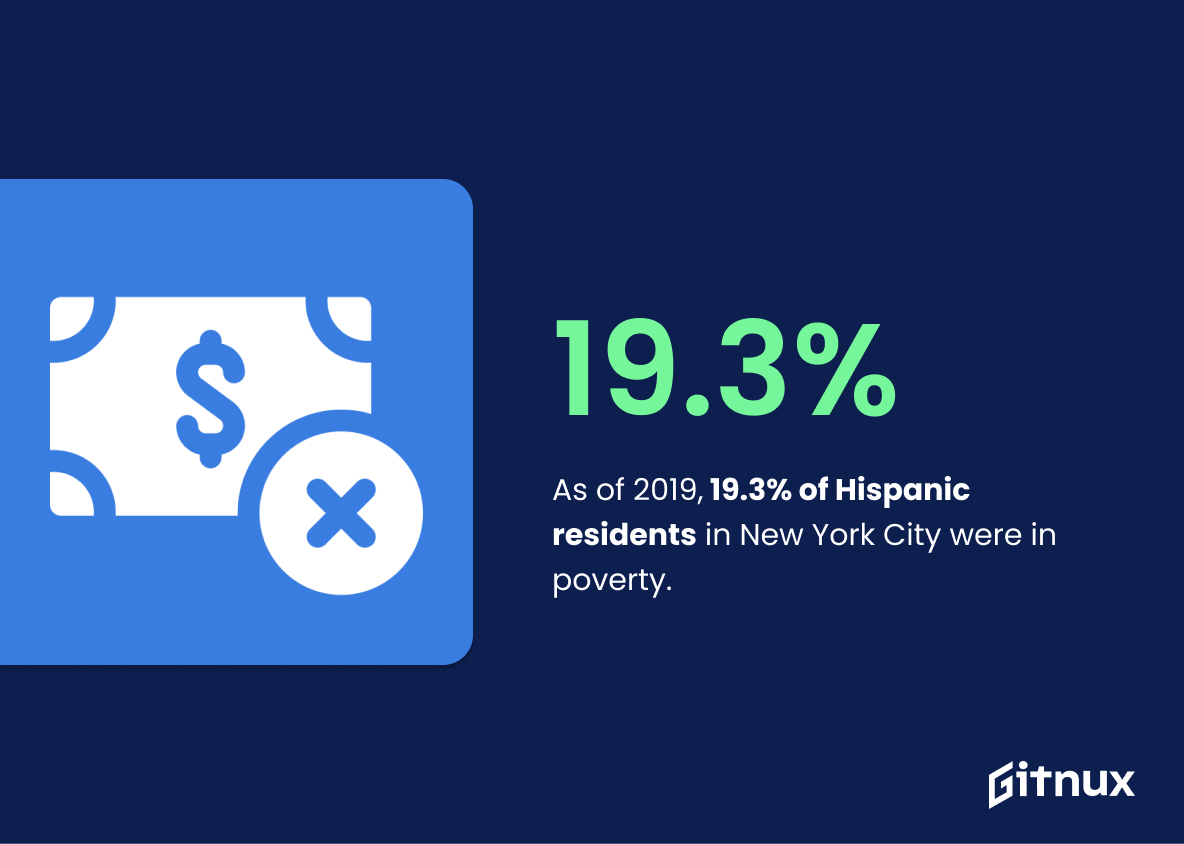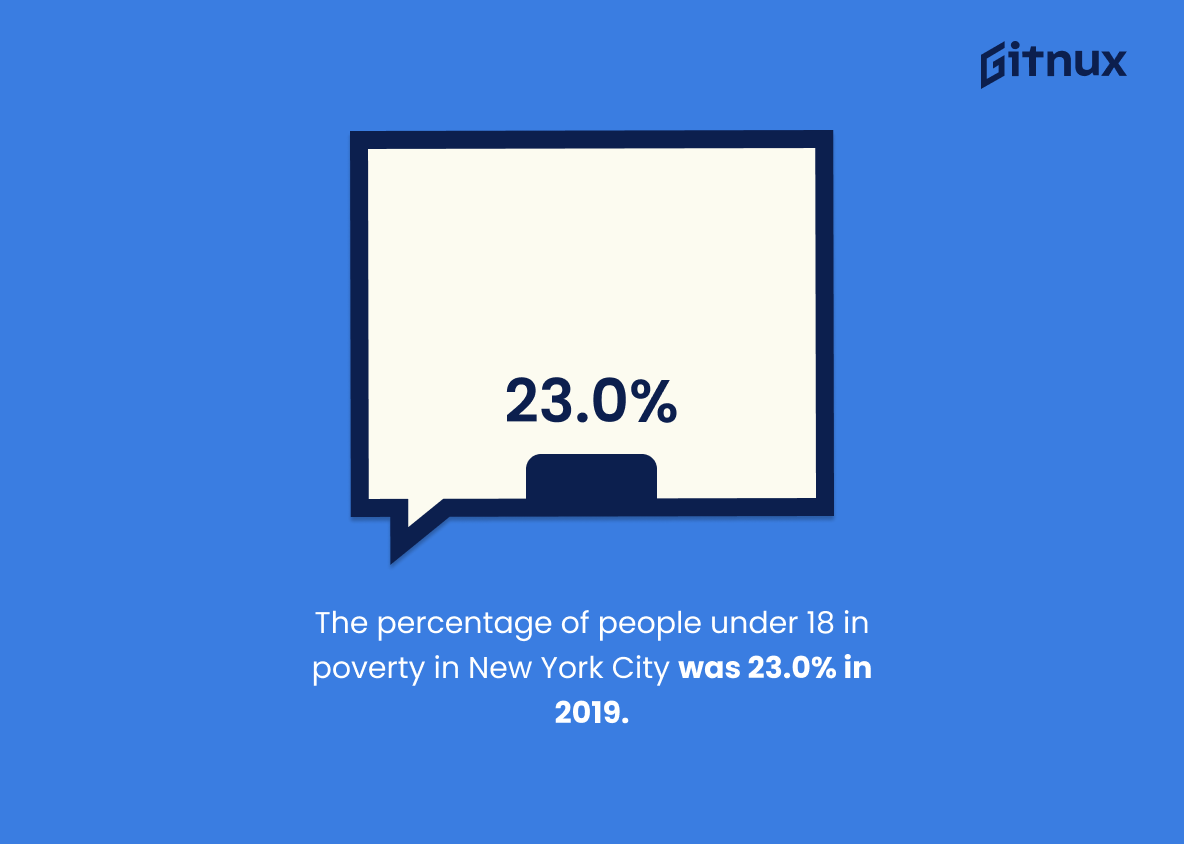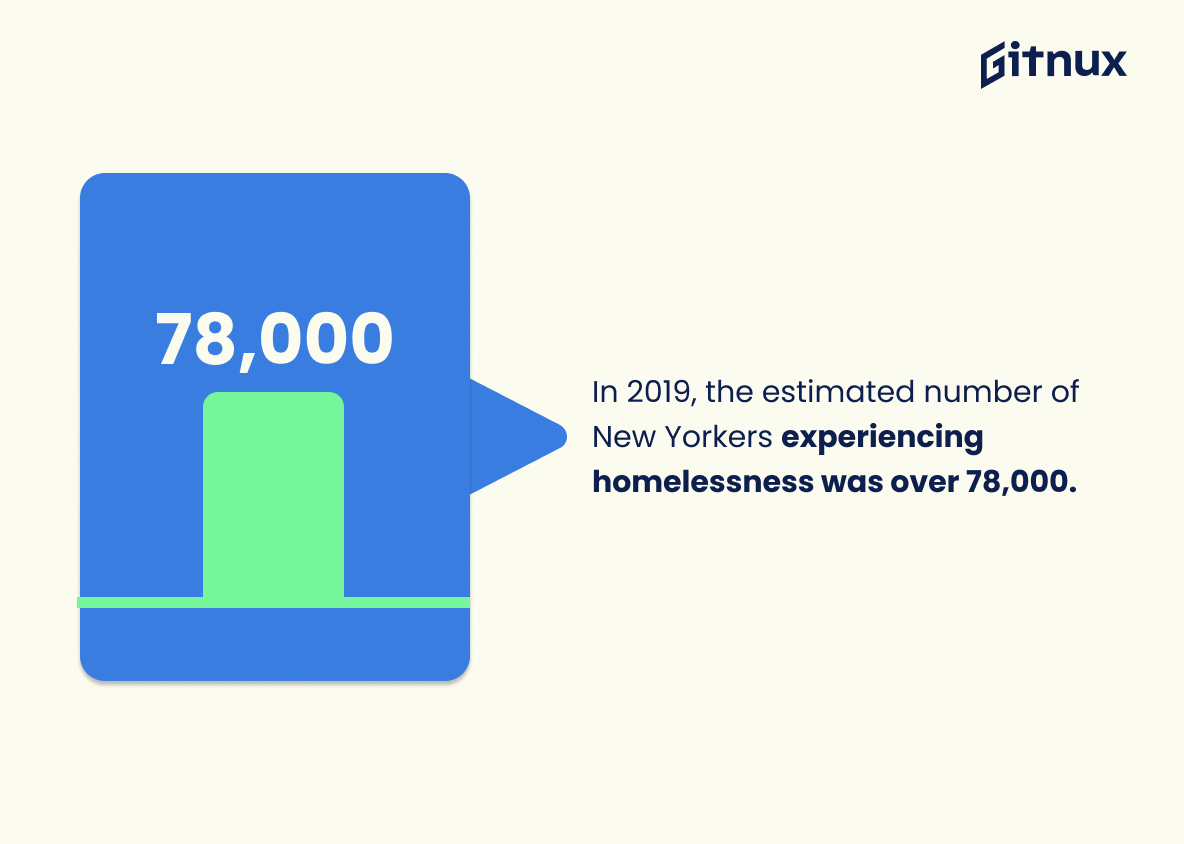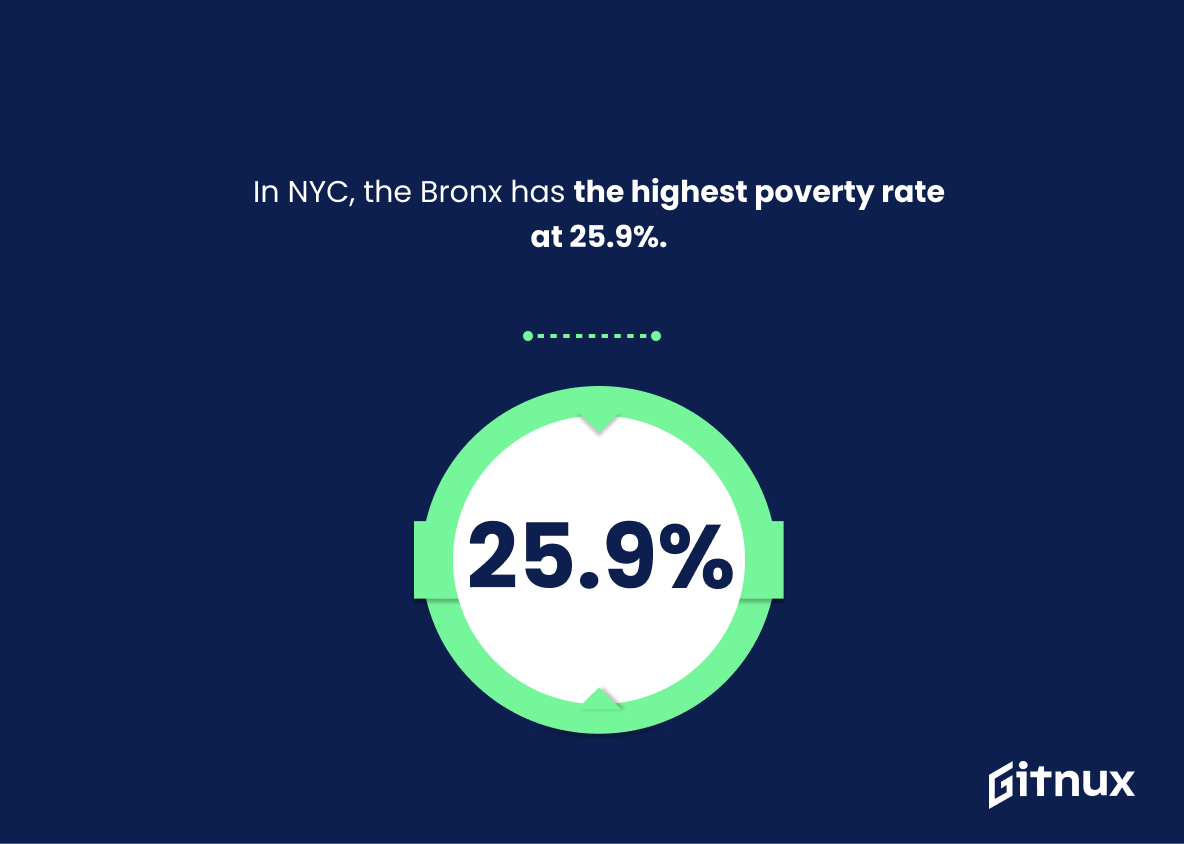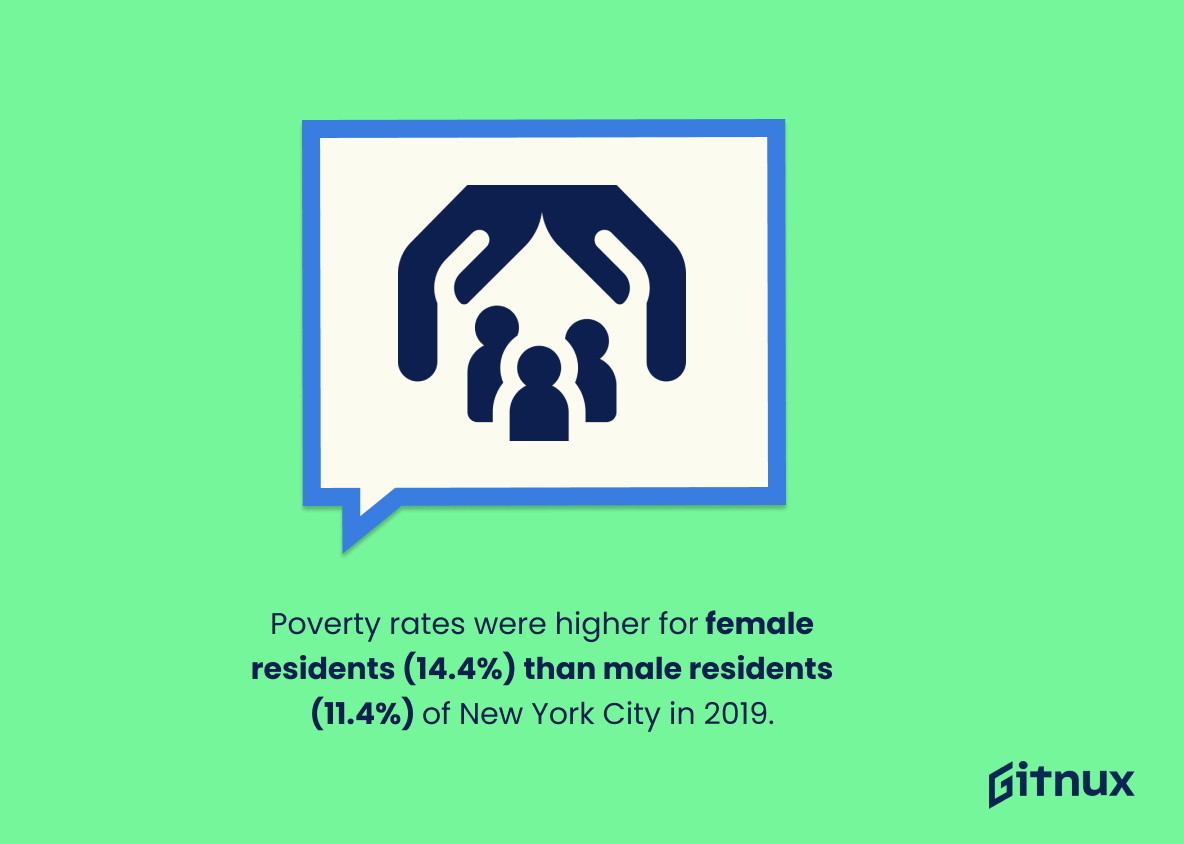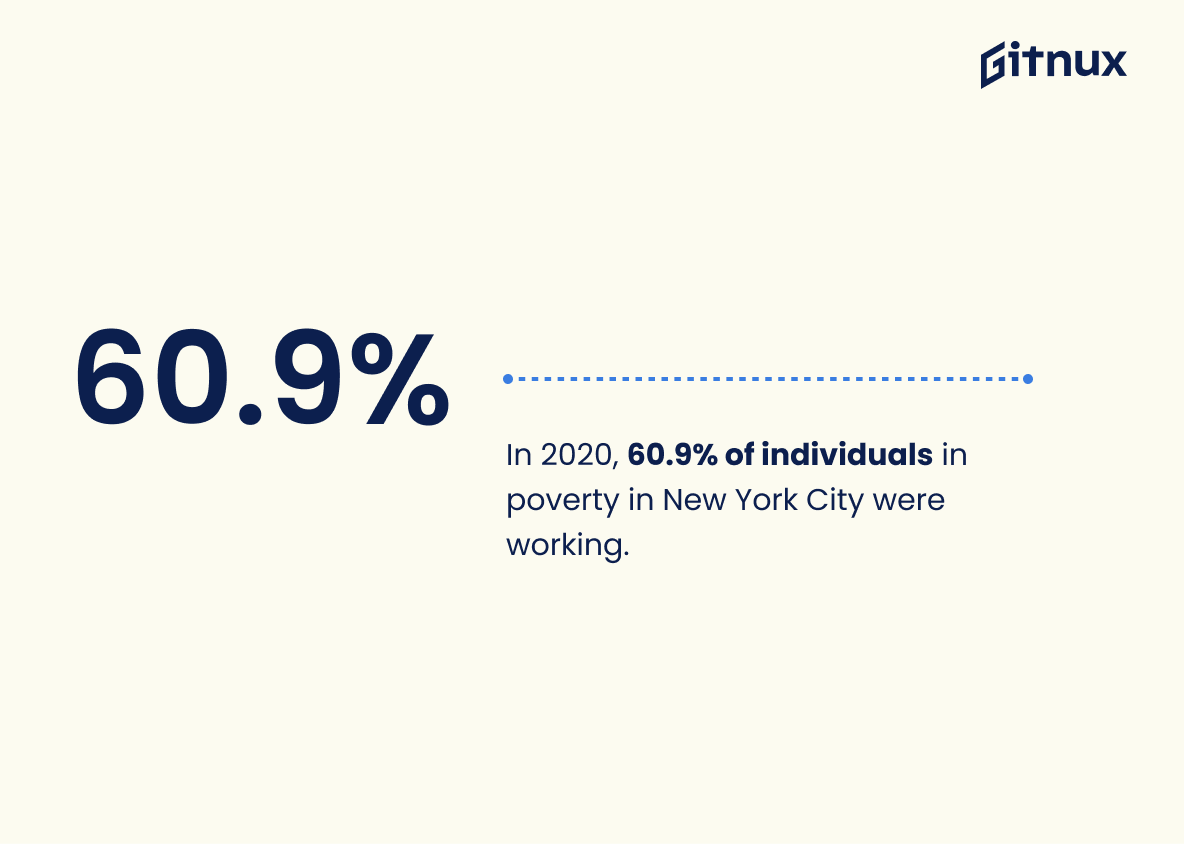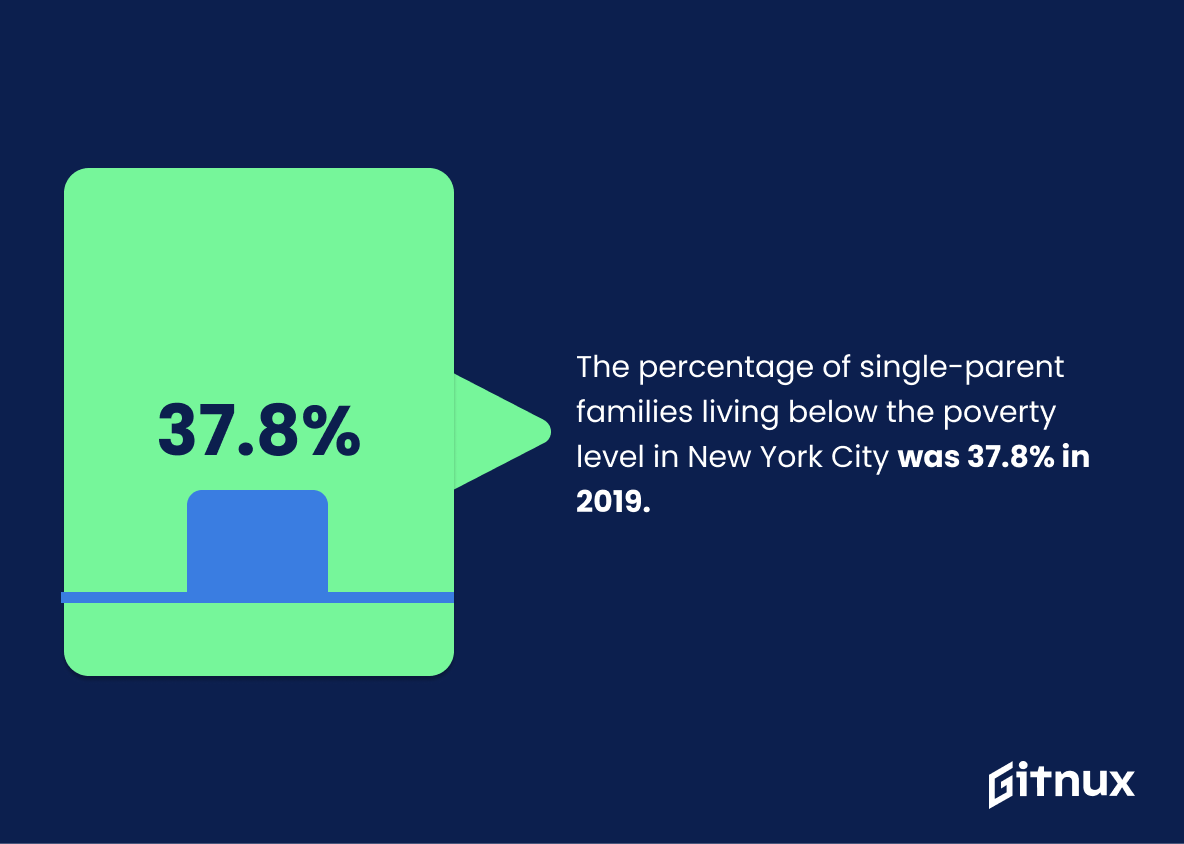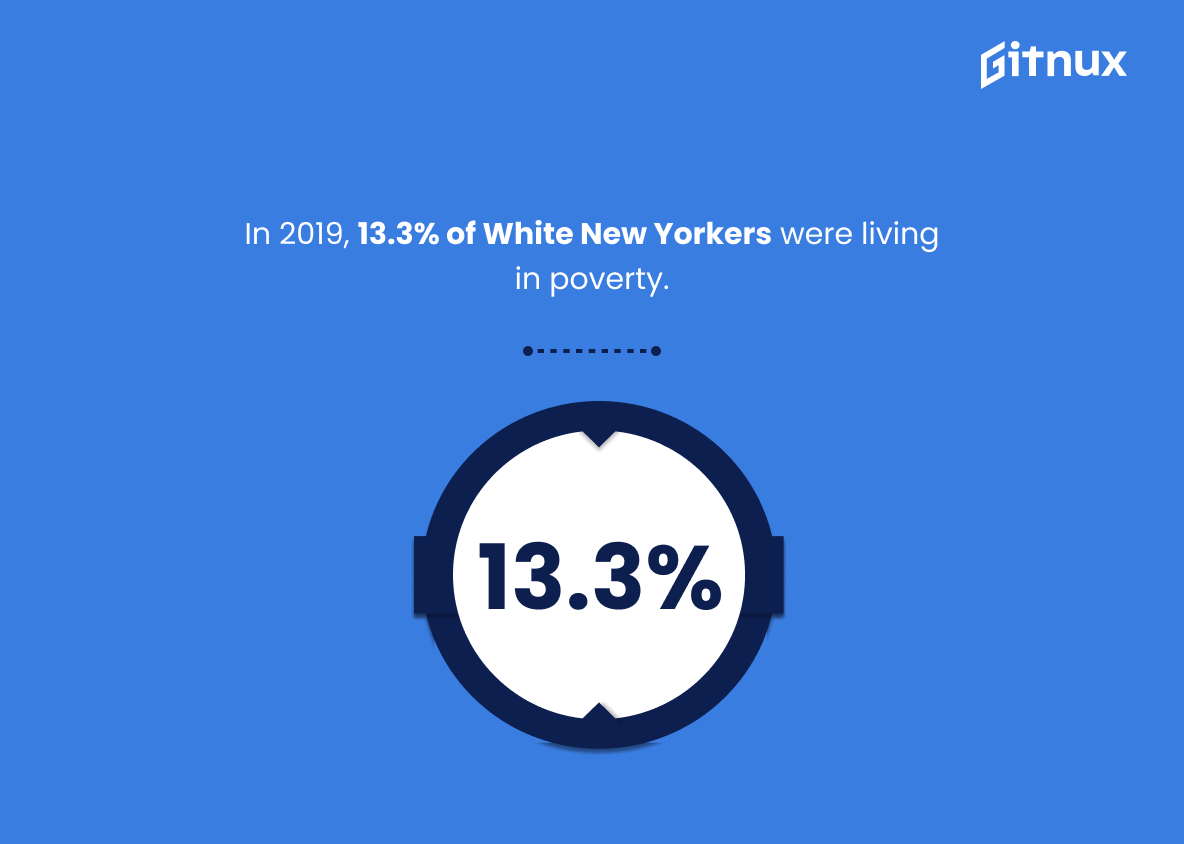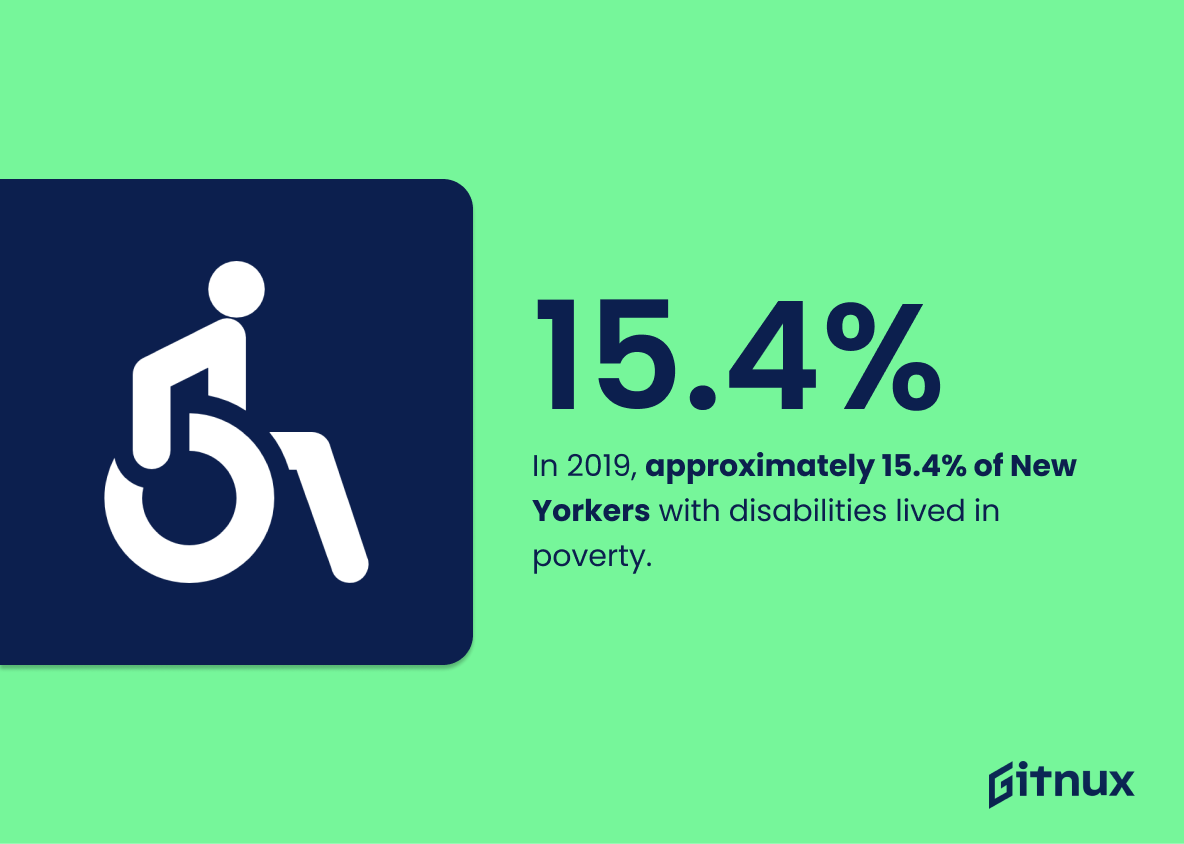Poverty is a major issue in New York City, and the statistics paint an alarming picture. According to data from 2020, the poverty rate was 11.7%, with 22.4% of children living below the poverty line. The percentage of Hispanic residents in poverty was 19.3%, while 23% of people under 18 were also affected by it. Asian American New Yorkers had a 25.6% poverty rate that same year, and 78,000 individuals experienced homelessness at some point during 2019 according to estimates from that time period as well as over 944 thousand persons living in poverty overall throughout NYC for 2020 alone – 60 percent of which were working adults nonetheless.
The Bronx has been particularly hard hit by this crisis; its estimated 25-point-nine percent (25%) being higher than any other borough’s rates combined together – single parent families have been especially vulnerable too with 37-point eight percent (37%) falling into such category back on 2019 figures alongside 13-point three percent (13%) White New Yorkers facing similar conditions then plus 15-point four percent (15%) disabled citizens struggling against economic hardship around those times too.
Food insecurity affects more than one million city dwellers meanwhile homeless students enrolled within public schools reached 120 thousand nine hundred twenty nine pupils during 2018/2019 school year only. Unemployment among poor households stood at 12 point one per cent last year whereas physical health issues raised their respective numbers up to eighteen point eight per cent accordingly yet first generation immigrants faced even worse odds since 20 point three per cent lived beneath financial threshold then finally forty plus percentages amongst sheltering families included employed heads despite 8 points increase registered across all family units present there just recently.
New York City Poverty Statistics Overview
As of 2019, 19.3% of Hispanic residents in New York City were in poverty.
This statistic is a stark reminder of the harsh reality of poverty in New York City, particularly among Hispanic residents. It highlights the need for more resources and support to be directed towards this population in order to help them break the cycle of poverty.
The percentage of people under 18 in poverty in New York City was 23.0% in 2019.
This statistic is a stark reminder of the reality of poverty in New York City. It paints a vivid picture of the struggles faced by young people in the city, and serves as a call to action for those who are in a position to help.
The percentage of Asian American New Yorkers in poverty was 25.6% in 2019.
This statistic is a stark reminder of the disproportionate impact poverty has on Asian American New Yorkers. It highlights the need for targeted initiatives to address the unique challenges faced by this community in order to reduce poverty and improve quality of life.
In 2019, the estimated number of New Yorkers experiencing homelessness was over 78,000.
This statistic is a stark reminder of the reality of poverty in New York City. It paints a vivid picture of the thousands of individuals and families who are struggling to make ends meet and are without a safe and secure place to call home. It serves as a reminder of the need for continued investment in affordable housing and other resources to help those in need.
In NYC, the Bronx has the highest poverty rate at 25.9%.
This statistic is a stark reminder of the reality of poverty in the Bronx. It serves as a reminder that poverty is a pervasive issue in New York City, and that the Bronx is disproportionately affected. It is a call to action to address the issue of poverty in the Bronx and throughout New York City.
In 2020, the number of persons living in poverty in New York City was 944,429 individuals.
This statistic is a stark reminder of the reality of poverty in New York City. It paints a vivid picture of the immense number of individuals who are struggling to make ends meet and highlights the need for more effective policies and initiatives to address this issue.
Poverty rates were higher for female residents (14.4%) than male residents (11.4%) of New York City in 2019.
This statistic is a stark reminder of the gender inequality that exists in New York City. It highlights the fact that women are more likely to be living in poverty than men, and that this disparity is still present in 2019. This is an important issue to address, as poverty can have a significant impact on a person’s quality of life and access to resources. It is essential to understand the causes of this inequality in order to create effective solutions that can help reduce poverty in New York City.
In 2020, 60.9% of individuals in poverty in New York City were working.
This statistic is a powerful reminder that poverty is not always the result of a lack of effort. Despite the fact that the majority of individuals in poverty in New York City were working, they still could not make ends meet. This statistic highlights the need for more comprehensive policies to address poverty in New York City.
The percentage of single-parent families living below the poverty level in New York City was 37.8% in 2019.
This statistic serves as a stark reminder of the prevalence of poverty among single-parent families in New York City. It highlights the need for more resources and support for these families, as well as the need for more effective policies to reduce poverty in the city.
In 2019, 13.3% of White New Yorkers were living in poverty.
This statistic is a stark reminder of the reality of poverty in New York City. It highlights the fact that even in a city as diverse and prosperous as New York, a significant portion of its White population is still struggling to make ends meet. This statistic serves as a call to action to address the issue of poverty in the city and to ensure that all New Yorkers have access to the resources they need to thrive.
In 2019, approximately 15.4% of New Yorkers with disabilities lived in poverty.
This statistic is a stark reminder of the harsh reality that many New Yorkers with disabilities face. It highlights the fact that a significant portion of the population is struggling to make ends meet and is in need of assistance. It also serves as a call to action for policy makers to take steps to reduce poverty among this vulnerable population.
In 2019, the unemployment rate for New Yorkers living below the poverty line was 12.1%.
This statistic serves as a stark reminder of the harsh reality of poverty in New York City. It paints a vivid picture of the struggles faced by those living below the poverty line, and highlights the need for more effective policies and initiatives to help those in need.
In 2019, the poverty rate for New York City residents in poor physical health was 18.8%.
This statistic is a stark reminder of the reality of poverty in New York City. It highlights the fact that those living in poverty are more likely to suffer from poor physical health, a situation that can be exacerbated by limited access to healthcare and other resources. This statistic serves as a call to action to address the underlying causes of poverty in the city and to ensure that all New Yorkers have access to the resources they need to lead healthy and productive lives.
The poverty rate for first-generation immigrants in New York City was 20.3% in 2019.
This statistic is a stark reminder of the struggles faced by first-generation immigrants in New York City. It highlights the need for more resources and support for these individuals, who are often overlooked and underserved. It also serves as a call to action for those who are in a position to help, to ensure that these individuals have access to the same opportunities as their peers.
Over 40% of families with children in NYC shelters had a household head who was employed in 2020.
This statistic is a powerful reminder of the reality of poverty in New York City. Despite the fact that over 40% of families with children in NYC shelters had a household head who was employed, they still could not make ends meet and were forced to seek shelter. This statistic speaks to the need for more resources and support for those living in poverty in New York City.
In 2020, the number of families with children in the New York City shelter system increased by 8%.
This statistic is a stark reminder of the growing number of families in New York City who are struggling to make ends meet and are in need of shelter. It highlights the severity of the poverty crisis in the city and the need for more resources to help those affected.
Conclusion
The data presented in this blog post paints a stark picture of poverty and homelessness in New York City. The overall poverty rate for the city was 11.7% in 2020, while child poverty stood at 22.4%. Poverty rates were higher among Hispanic residents (19.3%), Asian Americans (25.6%) and those under 18 years old (23%). In 2019, an estimated 78,000 people experienced homelessness with over 120,929 homeless students enrolled in NYC public schools during the 2018-2019 school year – an 8% increase from 2020 to 2021 alone.
Furthermore, single parent families had a 37.8% poverty rate; first generation immigrants 20%; individuals living below the line 12%, as well as those with poor physical health 18%. Over 40% of families with children residing within shelters also had household heads who were employed last year despite their circumstances – highlighting how difficult it is to escape such situations without support or resources available to them..
These statistics demonstrate that there are still many challenges facing New Yorkers when it comes to tackling issues around economic inequality and social exclusion which need urgent attention if we want our communities thrive again after these unprecedented times caused by COVID-19 pandemic .
References
0. – https://www..nyc.gov
1. – https://www.coalitionforthehomeless.org
2. – https://www.datacommons.org
